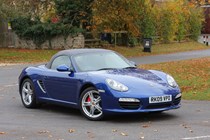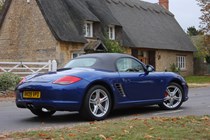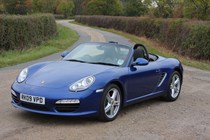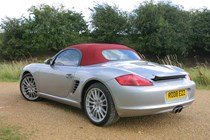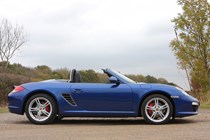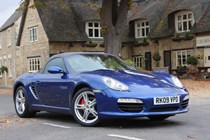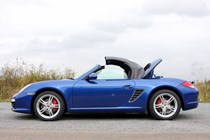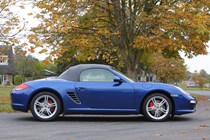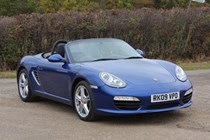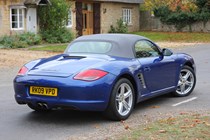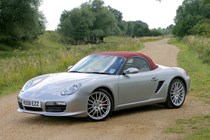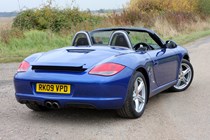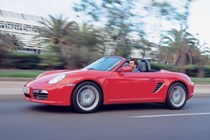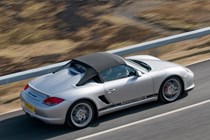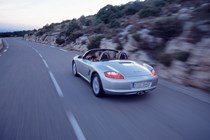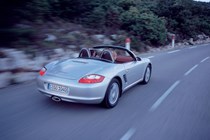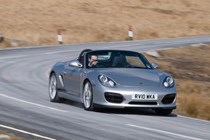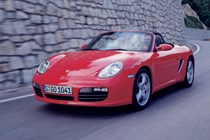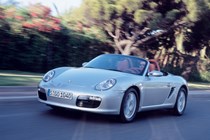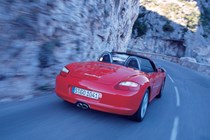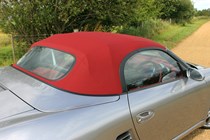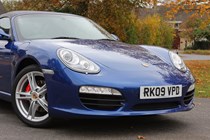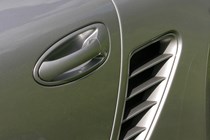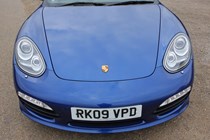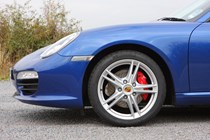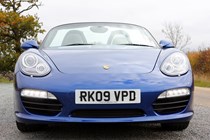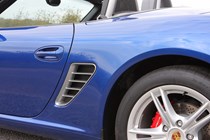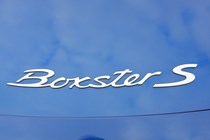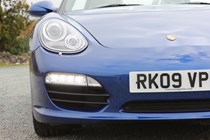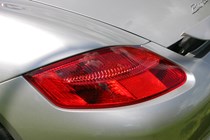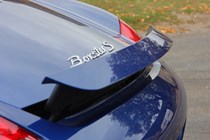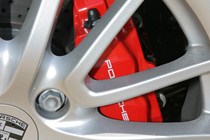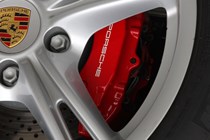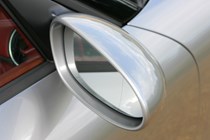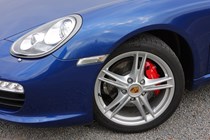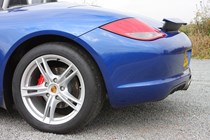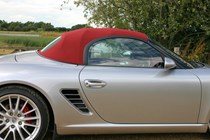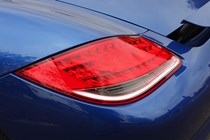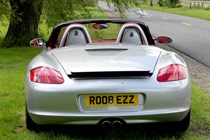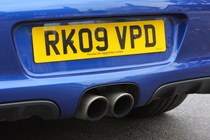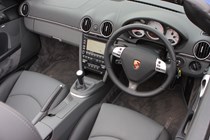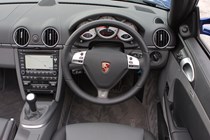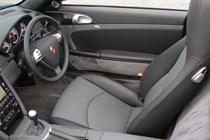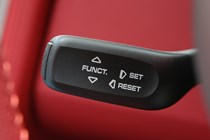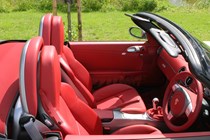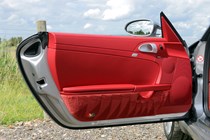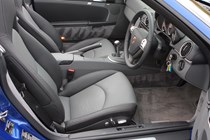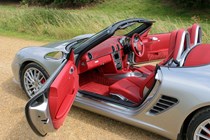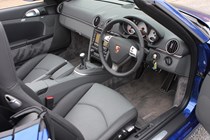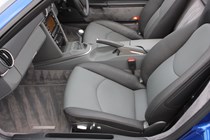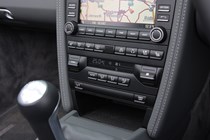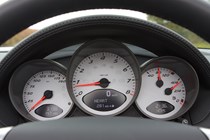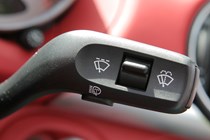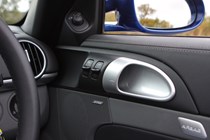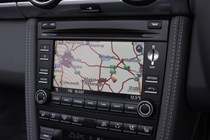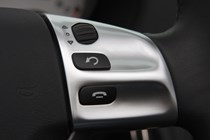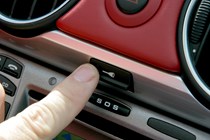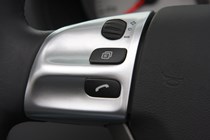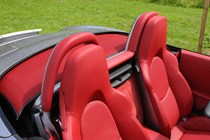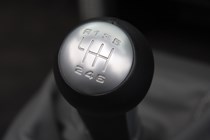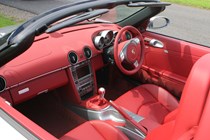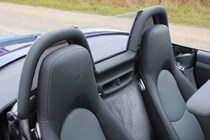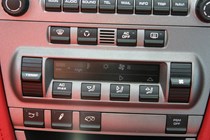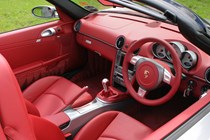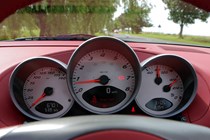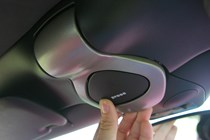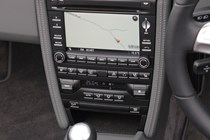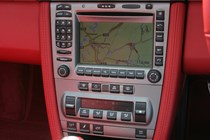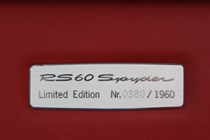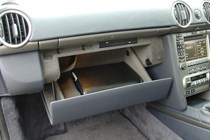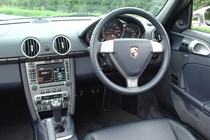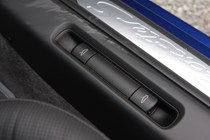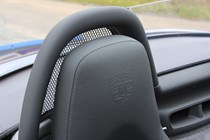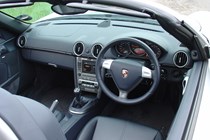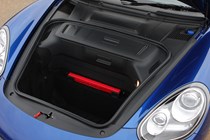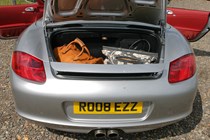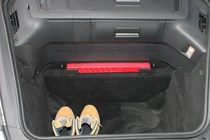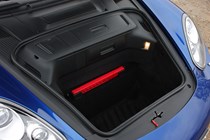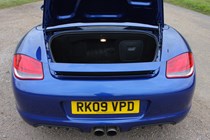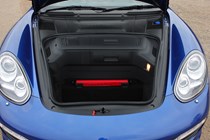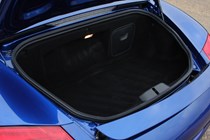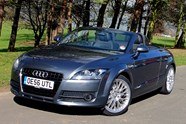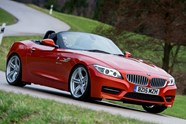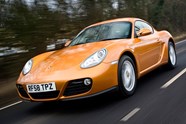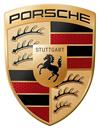
Porsche Boxster Roadster (2004-2011) review
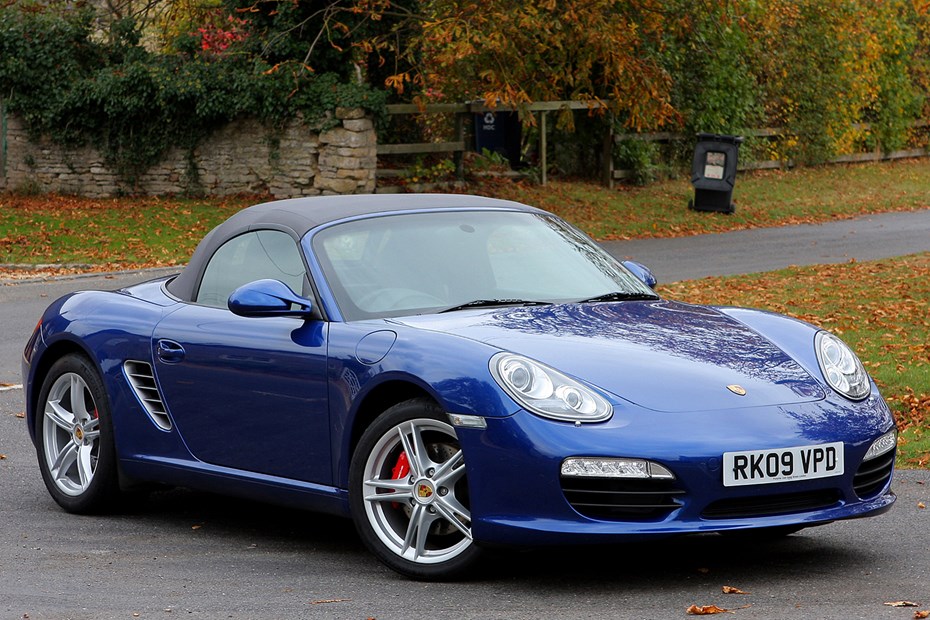
At a glance
| Price new | £32,678 - £49,902 |
|---|---|
| Used prices | £3,826 - £19,045 |
| Road tax cost | £430 - £760 |
| Insurance group | 43 - 48 |
Get an insurance quote with

|
|
| Fuel economy | Not tested to latest standards |
| Range | 344 - 436 miles |
| Number of doors | 2 |
| View full specs for a specific version | |
Available fuel types
Petrol
Pros & cons
- Intoxicating driving experience
- Surprisingly practical
- Great value as a used buy
- There are some expensive issues to look out for
- Standard equipment wasn't generous
- Avoid badly modified examples
Porsche Boxster (04-11) rivals
Overview
The second-generation Porsche Boxster – known as the Type 987 in Porsche circles – firmly established the brand’s entry-level sportscar as a force to be reckoned with. The exterior design is prettier, the mid-engined dynamics further honed, there’s more power and the interior is significantly better than the original. A bona fide future classic, and a bargain at current prices, it’s worth every extra penny it costs over the first gen Type 986 Boxster.
But while this is a superbly satisfying driver’s car when it’s in fine fettle, a used Boxster may be a very different prospect – depending on how well it’s been look after by the previous owners. There are some fairly hefty issues you need to be aware of, too, especially on pre-2007 models. That’s where this page comes in.
Porsche Boxster 987 known faults and common problems
This generation of Boxster suffers with many of the same issues other Porsches of this era have to contend with. Bore scoring, IMS bearing failure, worn suspension – these are all things you have to consider carefully before making a purchase. In fact, it’s especially important here because although most Boxsters won’t cost you as much as an equivalent age of Porsche 911 to buy, rectifying these problems will be just as expensive.
So, you need to see evidence of full and proper service history, to be vigilant about checking the MOT record, and to concern yourself more with condition than low mileage. We’d strongly recommend a profession pre-purchase inspection (known as a PPI) by a reputable specialist as well, but to help you narrow down your search here are 10 of the top Boxster issues you need to look out for.
Buying guide
Common issues, and what to look for if you’re thinking of getting one
1. Bore scoring
Some say this is the inevitable death throe of any non-Turbo of GT car flat-six Porsche engine of this era – including the 996 911 and 997 911 generations as well as earlier Boxsters, and the 987 Cayman. It’s essentially an issue that sees the piston damaging the wall of the cylinder, causing excessive oil consumption which ultimately becomes terminal.
Only way to know if a Boxster you’re considering isn’t already suffering is to have a professional pre-purchase inspection that includes a bore scope. Be sure to ask how they check and where. You want them to look via the sump as well as the sparkplug holes, if possible.
Symptoms include blackened tailpipes and oil, rough running, and tapping noises. To minimise the risk, look for extensive service history – on-time oil changes with good quality oil are essential. Use good quality fuel, avoid short journeys, idling when cold and revving hard until the engine is warm.
2. IMS failure
Not usually an issue for the most basic Boxster engines, nor later cars – and actually not a huge problem for the Boxster in general. But as with the 996 and 997 Porsche 911, the intermediate shaft bearing can fail, and if it does it might take the engine with it.
You can replace the bearing proactively. If the engine does go, it’s arguably a bigger deal with a Boxster, as getting a rebuild will represent a greater percentage of the total value of the vehicle – especially compared with a 997.
3. Other engine issues
Other things that can be problematic on the Boxster engine front include the rear main seal (RMS), the air-oil separator (has been linked to bore scoring), VarioCam actuators (these get noisy, then knock the idle out of rhythm, cause other problems), oil starvation in hard driving, cracked exhaust manifolds, and coil pack failure. Remember that point about a pre-purchase inspection?
4. Cooling system
Overheating is never a good thing. Causes in the Boxter include damage to the radiators at the front of the car – the openings fill up with leaves, which doesn’t help – and water pump failure. Make sure it runs cool during your test drive and doesn’t smell at all suspicious.
5. Roof
Check the condition of the roof fabric and make sure the electric folding mechanism works smoothly and swiftly (try a few cars, if you can, to be sure you know how it should behave). Problems are fixable, just make sure the cost of repairs are reflected in the purchase price.
What you really need to look for is evidence that water has been getting places it shouldn’t. Making sure the drain holes aren’t blocked is a start. Are the carpets wet? The concern is damage to delicate – and expensive – electronics inside the car.
6. Suspension
As well as regular Porsche issues with worn suspension components – this is to be expected – the 987 Boxster is a little prone to coil spring failure. Look at the MOT history for indication of impending failure, and make sure the car seems to be sitting level.
More generally, listen out for knocks and clonking noise during the test drive. Some suspension parts are relatively cheap to replace, others can be much more expensive. Evidence of recent geometry alignment from a respected specialist is something to look for in the paperwork, as these cars need to be looked after to handle their best.
7. Gearboxes
Both the manual and automatic transmissions in the 987 Boxster are considered pretty robust, but only if they’re serviced on schedule. Make sure every gear engages smoothly and that there aren’t any odd vibrations or disturbing noises. Again, this stuff can be fixed, just make sure you’re not paying over the odds.
8. Electrics and other interior issues
Check all the buttons and switches inside the car – multiple times. Do the windows drop and go back up when the doors are opened and closed? Do the locks work? The door handles?
How’s the trim? Fair wear and tear is to be expected, but badly scratched and otherwise neglected areas speak of careless previous owners – so what else weren’t they careful with?
9. Wheels and tyres
Corroded and damaged wheels are common 987 Boxster problems. Hardly world-ending but another expense to take into account.
Tyres should be premium-brand high-performance items and matched around the car. Replacements are cheaper than for 911s because they’re smaller but still pricier than for a family hatchback. Budget items are not a good sign, as they suggest previous owners who couldn’t keep up with proper maintenance costs.
10. Modifications
Tempting though it may be to get a car that performs ‘better’ than when it left the factory, we’d caution you against buying any car with aftermarket modifications. The quality of these can vary hugely, and the personal nature of them means that even if you like them, the next buyers might not – making the ‘unique’ car you’ve just bought more difficult to sell in the future. Not to mention the possibility that they will reduce reliability.
What models and trims can you buy?
The Boxster comes in standard and more powerful Boxster S variants, with a major engine upgrade in late 2006 ahead of a proper facelift in 2008. This saw the engines change again and the introduction of the more desirable PDK automatic transmission option. The pre- and post-facelift versions are referred to as the 987.1 and 987.2, respectively. There are no trim levels, as specification varies only with the engine.
The Boxster was criticised when new for its limited amount of standard equipment; so extensive is Porsche’s options list that very few secondhand Boxsters will be exactly alike, but this does make valuing individual cars quite tricky. Just make sure you know what you’re paying for.
There were a few limited edition 987 Boxsters. The RS60 Spyder, the Design Edition and the Black Edition each feature modifications and upgrades over regular models, but if you’re after something really special look for a Boxster Spyder from 2010. These were much more extensively modified, with lowered suspension, a more powerful engine and a unique manual roof arrangement – making the lightest Porsche road car at the time. One for the collectors.
Over the next few pages, we’ll recap our original impressions of the Porsche Boxster 987, covering its practicality, comfort, fuel economy and performance. If you’re short on time, you can also skip to our verdict page to see if we recommend this Boxster as a good used car.
As with all used purchases, do remember to get a car history check. It might just save you from an unpleasant surprise later down the line. Also, don’t forget you can use our valuation tool to get an idea of how much you should be paying for a car. You can also check our reviews section for more information about the cars you are interested in.



